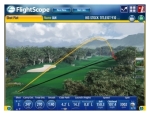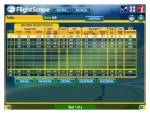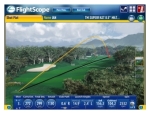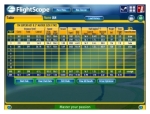I'm sorry this list has not been updated in 4 years. Its rigorous research now trying find courses that offer birthday discounts compared to 14 years ago when I first posted the Birthday Golf Specials list.
When I first started the Birthday Golf List it was ONLY for courses that gave you a Free single player round on or around your birthday. Then I added just 2 for 1 deals to the list.
With this "resurrection" of the Birthday Golf List, to qualify a golf course will need to give a free 18 hole round equivalent to their walking rate or greater. For example, if a golf course is giving a free option to ride but a player needs to still pay the green fee, that offer is not listed. However, providing a free green fee but player has the option to pay a cart fee, does count to be listed.
Also, NO purchase by the birthday golf player is required for a golf course to qualify to be listed. If a player must spend money on joining something to get the Birthday Golf discount, that offer is not listed. However, joining a free email list for example does count to be listed.
Lastly, 2 for 1, 3 for 2 and 4 for 3 deals where the birthday player's full green fee is covered counts to be listed. 4 for 5 deals and higher do not count to be listed.
We want only significant deals listed because a birthday is significant.
Thanks again for your help! ~ JohnnyGK
[ Click Here (forum post) in case you want to assist ].
Thanks! ~ JohnnyGK
Club Fitting: Real World Example
The question du jour for most golfers is “How will a custom club fitting session benefit me?” Seeing real world examples allows the golfing consumer to conceptualize what they stand to gain by letting a professional get them into a set of properly-fitted clubs.
Let’s take a look at one of our recent club fittings for a gentleman named Ian. Ian is a good player that came in looking for a little more distance on his driver. The fitting process begins by measuring the true specifications of a client’s equipment; length, shaft flex, loft and lie angle, and swing weight. By having the actual specs of the client’s current clubs, we can best identify anomalies and inconsistencies within the set that might help explain errant shots.
After recording all of the current club specs, we step out onto the driving range to gather shot data. Ian was all warmed up and ready to fire. Since his goal was to find extra distance off the tee, we started by having him hit his own driver to determine what might be causing his shorter drives relative to his above average clubhead speed. The first couple of drives with his own driver (Titleist 910 D3, 9.5 degrees of loft) yielded results that were obvious to the eye. The ball seemed to simply fall out of the air, a typical result of too much backspin. It also came out really high, which partially was a function of the way he released the clubhead through impact, but still something that could be tinkered with a bit.
Click Images above to view larger image
Taking a look at the Flightscope launch monitor data (click on images for larger version) confirmed that his current driver was not only spinning too much, but the clubhead was inefficient. “Smash Factor” is the efficiency measure often used in club fitting where 1.50 is the optimal result (The formula for smash factor is ball speed divided by clubhead speed). Drivers are engineered to max out at 1.50 in order to conform with USGA standards.
Ian’s driver was averaging about 1.41. To put this in perspective, for Ian’s ability, 1.47 to 1.50 should be the norm for him off the tee. His driver was like hitting the ball with a pillow on the end of a stick, or “dead” in club fitting lingo.
Our first option for Ian was to try something with a bit lower loft to reduce the height of his drives, and to test lower spinning shafts that would reduce the drag on his drives. Excessive backspin kills driving distance, and a rough rule of thumb is backspin around 2,500 rpms is optimal. The club we gave Ian to hit was a Taylor Made Superfast 2.0 TP with 8.5 degrees of loft. The shaft was a strong-flex, Matrix Ozik F7M2 designed to impart less backspin on the ball.
Looking at the screen shots of the Flightscope data in images 1 and 2, you’ll notice the huge improvement in Ian’s distance. He gained 5 mph of ball speed and reduced backspin by 15%, translating into an average of 22 yards of extra distance. And that was before tweaking the club and shaft combination even more to make his misses a bit more manageable.
The moral to the story is simple. Many times, you can’t simply swing the club better to achieve the results you seek. Ian could have swung out of his shoes with his old driver and never come close to the distance he achieved swinging smoother with his new driver. We can all use some swing fine tuning (or complete overhaul at times), but do yourself a favor and play equipment that is right for your swing. The game is a lot more fun that way.
Follow us on Twitter! @tfsgolf
Facebook page: facebook.com/fittingstudio
Keywords: Golf, Golf Club, Custom Golf Club, Club Fitting, Golf Club Building
When I first started the Birthday Golf List it was ONLY for courses that gave you a Free single player round on or around your birthday. Then I added just 2 for 1 deals to the list.
With this "resurrection" of the Birthday Golf List, to qualify a golf course will need to give a free 18 hole round equivalent to their walking rate or greater. For example, if a golf course is giving a free option to ride but a player needs to still pay the green fee, that offer is not listed. However, providing a free green fee but player has the option to pay a cart fee, does count to be listed.
Also, NO purchase by the birthday golf player is required for a golf course to qualify to be listed. If a player must spend money on joining something to get the Birthday Golf discount, that offer is not listed. However, joining a free email list for example does count to be listed.
Lastly, 2 for 1, 3 for 2 and 4 for 3 deals where the birthday player's full green fee is covered counts to be listed. 4 for 5 deals and higher do not count to be listed.
We want only significant deals listed because a birthday is significant.
Thanks again for your help! ~ JohnnyGK
[ Click Here (forum post) in case you want to assist ].
Thanks! ~ JohnnyGK

|
||||
|
|
Page: | 1 | |
The question du jour for most golfers is “How will a custom club fitting session benefit me?” Seeing real world examples allows the golfing consumer to conceptualize what they stand to gain by letting a professional get them into a set of properly-fitted clubs.
Let’s take a look at one of our recent club fittings for a gentleman named Ian. Ian is a good player that came in looking for a little more distance on his driver. The fitting process begins by measuring the true specifications of a client’s equipment; length, shaft flex, loft and lie angle, and swing weight. By having the actual specs of the client’s current clubs, we can best identify anomalies and inconsistencies within the set that might help explain errant shots.
After recording all of the current club specs, we step out onto the driving range to gather shot data. Ian was all warmed up and ready to fire. Since his goal was to find extra distance off the tee, we started by having him hit his own driver to determine what might be causing his shorter drives relative to his above average clubhead speed. The first couple of drives with his own driver (Titleist 910 D3, 9.5 degrees of loft) yielded results that were obvious to the eye. The ball seemed to simply fall out of the air, a typical result of too much backspin. It also came out really high, which partially was a function of the way he released the clubhead through impact, but still something that could be tinkered with a bit.
 |  |  |  |
| Image 1 - His Titleist 910 D3, 9.5 degrees of loft | Image 2 - His Monitor Results | Image 3 - Taylor Made Superfast 2.0 TP 8.5 degrees loft | Image 4 - His Swing our Club Results |
Taking a look at the Flightscope launch monitor data (click on images for larger version) confirmed that his current driver was not only spinning too much, but the clubhead was inefficient. “Smash Factor” is the efficiency measure often used in club fitting where 1.50 is the optimal result (The formula for smash factor is ball speed divided by clubhead speed). Drivers are engineered to max out at 1.50 in order to conform with USGA standards.
Ian’s driver was averaging about 1.41. To put this in perspective, for Ian’s ability, 1.47 to 1.50 should be the norm for him off the tee. His driver was like hitting the ball with a pillow on the end of a stick, or “dead” in club fitting lingo.
Our first option for Ian was to try something with a bit lower loft to reduce the height of his drives, and to test lower spinning shafts that would reduce the drag on his drives. Excessive backspin kills driving distance, and a rough rule of thumb is backspin around 2,500 rpms is optimal. The club we gave Ian to hit was a Taylor Made Superfast 2.0 TP with 8.5 degrees of loft. The shaft was a strong-flex, Matrix Ozik F7M2 designed to impart less backspin on the ball.
Looking at the screen shots of the Flightscope data in images 1 and 2, you’ll notice the huge improvement in Ian’s distance. He gained 5 mph of ball speed and reduced backspin by 15%, translating into an average of 22 yards of extra distance. And that was before tweaking the club and shaft combination even more to make his misses a bit more manageable.
The moral to the story is simple. Many times, you can’t simply swing the club better to achieve the results you seek. Ian could have swung out of his shoes with his old driver and never come close to the distance he achieved swinging smoother with his new driver. We can all use some swing fine tuning (or complete overhaul at times), but do yourself a favor and play equipment that is right for your swing. The game is a lot more fun that way.

Follow us on Twitter! @tfsgolf
Facebook page: facebook.com/fittingstudio
Keywords: Golf, Golf Club, Custom Golf Club, Club Fitting, Golf Club Building
|
Page: | 1 | |




